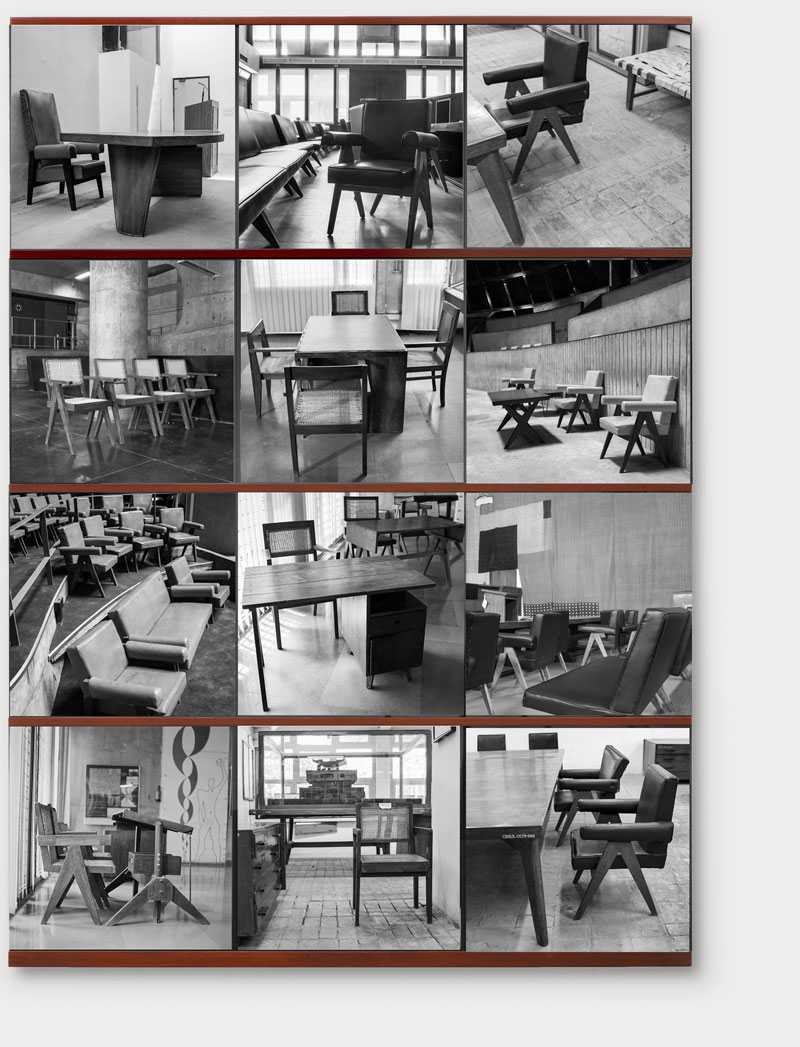
Dayanita Singh, Let’s Talk Again, 2023
Teak panel and archival pigment prints, 12 parts, 45.7 × 45.7 cm each / 190.5 × 137 × 5 cm overall, Emanuel Hoffmann Foundation, on permanent loan to the Öffentliche Kunstsammlung Basel, photo: courtesy the artist and Frith Street Gallery, London, © Dayanita Singh
Dayanita Singh groups her works by formal criteria or content and presents them as “mobile museums”: screens or modular showcases, adjustable shelves, or stacked boxes are an integral part of her constellations. Each unique view – of people, architecture, interiors, furniture – has its place in the overall framework and is also related to the pictures surrounding it. Such mobility – on the part of both artist and viewer – makes it clear that for Singh, photography is a fluid medium; her custom-made structures enable her to put together ever-new variations on the present sourced from large archives.
Singh’s work eludes museum classifications. She treats empty rooms as “portraits” and by showing assemblages of similar motifs, she fosters precise, comparative interpretations. Singh’s artistic practice is rooted in photojournalism. Born into a generation that still envisages predetermined social roles for Indian women, photography was her ticket to freedom. At first she used the book – far more accessible and therefore more democratic than the museum – as a vehicle for presenting her work. Yet even her early, bibliophilic objects were spatially conceived: in foldable objects or leporellos, quiet observations keep meeting up in new and different ways.
Singh’s series are related to one another in varying degrees. Let’s Hold On, Let’s Talk and Let’s Talk Again, consisting of twelve parts each, all have a feature in common, such as columns or chairs which come with their own cultural-historical connotations. The artist presents the photographic prints in wooden frames that resemble type cases; the close proximity of the prints is also reminiscent of multiple exposures found on contact sheets. Each image anticipates the next in an ongoing narrative; an image on its own cannot tell the full story.
Dayanita Singh (b. 1961, New Delhi, India) studied visual communication at the National Institute for Design in Ahmedabad as well as photojournalism and documentary photography at the International Center of Photography in New York. She uses the medium of photography to examine the narrative potential of images, even uneventful ones, in the form of books and specially created displays. The artist draws from her own image archive, which has grown considerably over time. She lives and works in New Delhi and Goa.
